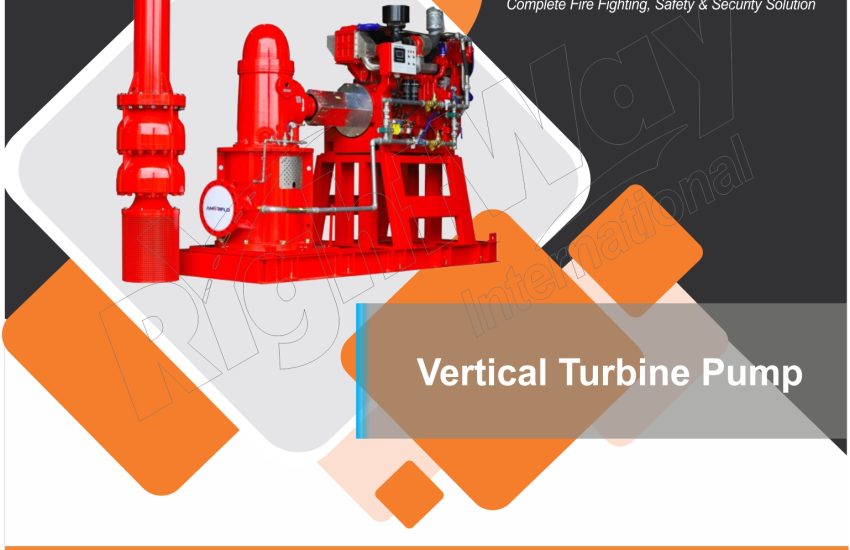Vertical Turbine Pump are a specialized type of centrifugal pump designed for deep well applications and high-flow systems. Their unique vertical orientation and construction make them ideal for handling large volumes of water and other fluids from deep underground sources or reservoirs. This article provides a comprehensive overview of vertical turbine pumps, including their design, operation, applications, and benefits.
How Vertical Turbine Pumps Work
Vertical turbine pumps operate on the principle of centrifugal force, similar to other centrifugal pumps, but with a vertical orientation. Here’s a step-by-step breakdown of their operation:
- Water Inlet: Water is drawn into the pump through the suction bell or intake located at the bottom of the pump assembly.
- Impeller Rotation: The pump features one or more impellers, which are rotating components with blades designed to create centrifugal force.
- Centrifugal Force: As the impellers spin, they generate centrifugal force that pushes the water outward, increasing its velocity and pressure.
- Pressure Increase: The water is moved up through a vertical column pipe, gaining pressure as it travels through the pump assembly.
- Discharge: The high-pressure water exits through the discharge outlet located at the top of the pump assembly.
Design Features of Vertical Turbine Pumps
- Vertical Orientation
- Description: The pump is designed with a vertical shaft and column, allowing it to be installed in deep wells or long vertical spaces.
- Multi-Stage Configuration
- Description: Vertical turbine pumps often feature multiple stages (impeller and diffuses assemblies) to achieve high pressures and flow rates.
- Column Pipe
- Description: The pump includes a column pipe that extends from the pump base to the discharge, housing the pump shaft and providing a pathway for the water.
- Submersible and Non-Submersible Designs
- Description: Available in submersible versions, where the pump is fully submerged, and non-submersible versions, where the pump is installed above the water source.
- Material Options
- Description: Constructed from durable materials such as stainless steel, bronze, and cast iron to withstand harsh conditions and ensure long service life.
Applications of Vertical Turbine Pumps
- Deep Well Water Supply
- Use: Ideal for pumping water from deep wells, including agricultural irrigation, municipal water supply, and industrial processes.
- Cooling Systems
- Use: Used in cooling systems to circulate water in power plants, HVAC systems, and other industrial cooling applications.
- Fire Protection Systems
- Use: Provides high-flow water for fire protection systems in large buildings, industrial facilities, and high-rise structures.
- Municipal Water Systems
- Use: Supplies water for municipal distribution systems, including urban water supply and treatment facilities.
- Mining Operations
- Use: Utilized in mining operations to de-water shafts, transport water, and support various mining processes.
Benefits of Vertical Turbine Pumps
- High Efficiency
- Benefit: Capable of achieving high flow rates and pressures with efficient energy consumption, making them ideal for large-scale applications.
- Space Efficiency
- Benefit: The vertical design allows for installation in confined spaces or deep wells where horizontal space is limited.
- Durability
- Benefit: Constructed with robust materials and designed to withstand harsh operating conditions, ensuring long-term reliability.
- Versatility
- Benefit: Suitable for a wide range of applications, including water supply, cooling systems, fire protection, and industrial processes.
- Low Maintenance
- Benefit: Designed for durability and ease of maintenance, reducing the need for frequent repairs and downtime.
Installation and Maintenance
- Installation
- Considerations: Proper installation is crucial for optimal performance. Ensure correct alignment, secure mounting, and proper connections to the water source and discharge lines. Adequate support structures and alignment mechanisms should be in place.
- Maintenance
- Considerations: Regular maintenance is essential to ensure efficient operation. This includes inspecting the pump for wear, checking the alignment of the shaft, monitoring performance, and cleaning or replacing components as necessary.
Conclusion
Vertical Turbine Pump are a powerful and versatile solution for applications requiring high flow rates and pressures, particularly from deep wells or high-lift situations. Their vertical orientation, multi-stage configuration, and durable construction make them ideal for water supply, cooling systems, fire protection, and various industrial processes. Understanding their design features, benefits, and maintenance requirements ensures that vertical turbine pumps deliver reliable performance and contribute effectively to the systems in which they are used.


